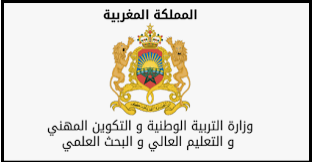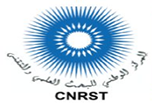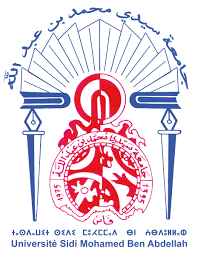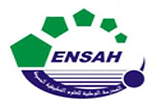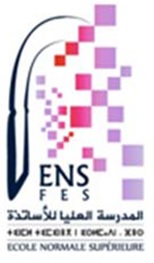April 01-02, 2021 | Fez, Morocco





Pr. El-ghazali Talbi received the Master and Ph.D degrees in Computer Science, both from the Institut National Polytechnique de Grenoble in France. He is a full Professor at the University of Lille. His current research interests are in the field of optimization, parallel algorithms, metaheuristics, high-performnce computing, optimization and machine learning, and application to energy, logistics/transportation, bioimedical and networks. Professor Talbi has a h-index of 56 and to his credit more than 300 publications in journals, chapters in books, and conferences. He is the co-editor of ten books. He was a guest editor of more than 17 special issues in different journals (Journal of Heuristics, Journal of Parallel and Distributed Computing, European Journal of Operational Research, Theoretical Computer Science, Journal of Global Optimization). He was the head of the INRIA Dolphin project and the bioinformatics platform of the Genopole of Lille. He has many collaborative national, European and international projects. He is the co-founder and the coordinator of the research group dedicated to Metaheuristics: Theory and Applications (META). He served as a conference chair of more than 20 international conferences (e.g. EA'2005, ROADEF'2006, META'2008, IEEE AICCSA'2010, META'2014, MIC'2015, OLA'2018, MOPGP'2019, AICCSA'2020).
During the last years, research in applying optimization approaches in the automatic design of deep neural networks (DNNs) becomes increasingly popular. Although various appproaches have been proposed, there is a lack of a comprehensive survey and taxonomy on this hot research topic. In this talk, we propose a unified way to describe the various optimization algorithms which focus on common and important search components of optimization algorithms: representation, objective function, constraints, initial solution(s) and variation operators. In addition to large scale search space, the problem is characterized by its variable mixed design space, very expensive and multiple blackbox objective functions. Hence, this unified methodology has been extended to advanced optimization approaches such as surrogate-based, multi-objective and parallel optimization.
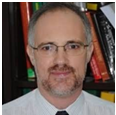
Pr. Leonel Sousa (M’01–SM’03) received a Ph.D. degree in Electrical and Computer Engineering from the Instituto Superior Técnico (IST), Universidade de Lisboa (UL), Lisbon, Portugal, in 1996, where he is currently Full Professor. Heisalso a Senior Researcher with the R&D Instituto de Engenharia de Sistemas e Computadores (INESC-ID). His research interests include VLSI architectures, computer architectures, parallel computing, computer arithmetic, and signal processing systems. He has contributed to more than 200 papers in journals and international conferences, for which he got several awards - such as, DASIP’13 Best Paper Award, SAMOS’11 ’Stamatis Vassiliadis’ Best Paper Award, DASIP’10 Best Poster Award, and the Honorable Mention Award UTL/Santander Totta for the quality of the publications in 2009. He has contributed to the organization of several international conferences, namely as program chair and as general and topic chair, and has given keynotes in some of them. He has edited four special issues of international journals, and he is currently Senior Editor of the IEEE JETCAS, Associate Editor of the IEEE Transactions on Computers, IEEE Access and Springer JRTIP. He is Fellow of the IET and Distinguished Scientist of ACM.
Arithmetic plays a major role in computing performance and efficiency. It is challenging to build platforms, ranging from embedded devices to high performance computers, supported on traditional binary arithmetic and silicon-based technologies that meet the requirements of today's applications. In this talk, the state-of-the-art of non-conventional computer arithmetic is presented, considering alternative computing models and emerging technologies. It provides comprehensive overview of logarithmic and residue number systems, hyperdimensional and stochastic computing, as well as arithmetic for quantum and DNA-based computing. And focuses application in emergent domains, such as deep learning and post-quantum cryptography.
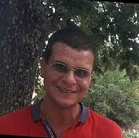
Pr. Khalid Satori received the PhD degree from the National Institute for the Applied Sciences INSA at Lyon in 1993. He received the Thesis of doctorate of State in Science at Faculty of Sciences of Fez, Morocco, in 1999. He is currently a professor of higher education of computer science at Faculty of Science, Sidi Mohamed ben Abdellah University, Fez, Morocco. He is the director of the LIIAN Laboratory and the Head of Department of Computer Science at the Faculty of Science of Fez. His research interests include real-time rendering, Image-based rendering, biomedical signal, camera calibration and self-calibration, 3D reconstruction, virtual reality, Cryptography, Data classification and segmentation.
3D reconstruction from images is an important and widely studied axis in recent decades. Its importance is reflected in the diversity of its application fields, namely: robotics, quality control, surveillance, medicine, shape recognition, augmented reality, video games, and others. There are several approaches of three-dimensional perception of the environment, however, the main approaches used are: reconstruction from silhouettes, reconstruction from texture, reconstruction from camera movement and reconstruction from epipolar geometry: Reconstruction from Silhouettes: Used in multi-camera environments, called "Shape from Silhouette", it makes an all-encompassing estimate of the 3D shape and visual envelope of interest objects. Usually two types to distinguished, surface and volume in real time. The reconstruction from texture: called "Shape from texture". Approaches of this type estimate the shape of objects from observed variations in texture. However, objects that will be rebuilt must be textured. The reconstruction from camera movement: called "Shape from motion", allows recovering the three-dimensional structure from a displacement vector field, indicating the projection of an object or scene in motion, in image planes. Reconstruction from epipolar geometry: called "Shape from epipolar geometry", the methods of this category are the most used in the field of computer vision. The main difficulty of these techniques results from the problem of the matching of the points between image couples. But once the matching is discerned for each couple of points from the two ordinary views, these points can be triangulated to estimate the 3D points of the homologous scene.

Pr. Amine Dhraief received the Master of Science and the Engineering degree both in Computer Science from the National School of Computer Sciences (ENSI), University of Manouba, Tunisia, respectively in 2006 and 2005, the PhD in Computer Science from Télécom Bretagne, France in 2009 and the HDR from ENSI, University of Manouba, Tunisia in 2019. He is currently an Assistant Professor of Computer Science at the Higher School Of Digital Economy, University of Manouba, Tunisia. His research and teaching interests focus on computer networks and distributed systems. He is currently serving on several reputed international conference Technical Program Committees (IEEE LCN, IWCMC, AICSSA, FNC, etc). He organized and served as the Technical Committee Chair and the Organizing Committee Chair of several international conferences (ANT, RAMCOM, Nets4Cars/Nets4Trains/Nets4Aircraft, Wiopt) . He led several national and international research project. He has been involved in several national and international collaborative research projects. His current research interests include future Internet architectures, protocol specification and optimization and performance evaluation. He is the author of more than 50 articles and papers in refereed journals and international conferences.
Unmanned Aerial Vehicles (UAVs) have been used by the United States Armed Forces since the late 1980s. The cost of embedded technologies in UAVs has drastically dropped since, making multi-UAV networks a reality. Multi-UAV networks are a set of fully autonomous aerial robots working together in a coordinated manner to achieve a specific goal. Multi-UAV networks are expected to be deployed not only in battlefields but also for aerial monitoring of agriculture fields or in supporting first time responders in case of disasters. However, deploying multi-UAV networks in a non-segregated airspace raises several issues. For example, UAV should cooperate together in order to efficiently detect potential collisions and execute the adequate escape maneuver. Such escape maneuver might impact the network topology and consequently the whole routing. This talk surveys the recent progress in multi-UAV networks and discuss some research issues and challenges in deploying such networks.

Prof. Sunny Joseph Kalayathankal. MSc., BEd, MPhil, CIC, PGDCA, ADCA, MCA, M.Tech, Ph.D (Mathematics), Ph.D Computer Science Prof, Dr. Sunny Joseph Kalayathankal received the MSc. degree from Kerala University , Kerala, India in 1986, BEd from Calicut University, Kerala in 1987, MPhil in 1993 and Ph.D (Mathematics) degree in 2010 from Kerala University, MCA from Indira Gandhi National Open University, New Delhi, India in 2002, M.Tech IT from Karnataka State Open University in 2013 and Ph.D. in Computer Science under Bharathiar University, Coimbatore, India in 2018. He is currently working as a Professor & Dean of Research Jyothi Engineering College Affiliated to APJ Abdul Kalam Technological University, Thrissur, Kerala India and has 33 years of teaching and 16 years of research experience. He has published more than 77 papers in the areas of Fuzzy modelling and decision making, Graph theory and Applied Mathematics. He has served as invited speaker in various National and International conferences. He is the reviewer of Iranian Journal of Fuzzy System, International Journal of Fuzzy system and Journal of Mathematical Modeling and Computer Simulation.
The thought process involved in the act of decision making is a complex array of streaming possibilities in which a person selects or discards information made available from diverse sources. In doing so one is led by a meaningful analysis of available information and optimal selection out of several apparently equi-efficient decisions. Since Zadeh (1965) published the fuzzy set theory as an extension of classic set theory, it has been widely used in many fields of application, such as pattern recognition, data analysis, system control, etc. The unique characteristic of this theory, in contrast to classic mathematics, is its operation on various membership functions (MF) instead of the crisp real values of the variables. Molodtsov (1999) initiated the concept of soft set theory as a new mathematical tool for dealing with uncertainties. Pabitra Kumar Maji et al. (2001) introduced fuzzy soft set theory which also deals with uncertainties. Out of the several higher order fuzzy sets, intuitionistic fuzzy sets by Atanassov (1985) and Ordered intuitionistic fuzzy sets proposed by Kalayathanal et al. (2010) have been found to be highly useful to deal with vagueness. Intuitionistic fuzzy set is described by two functions: a membership function and a non - membership function. We develop and apply similarity measures between ordered intuitionistic fuzzy sets to multiple attribute decision making (MADM) under fuzzy environment.
